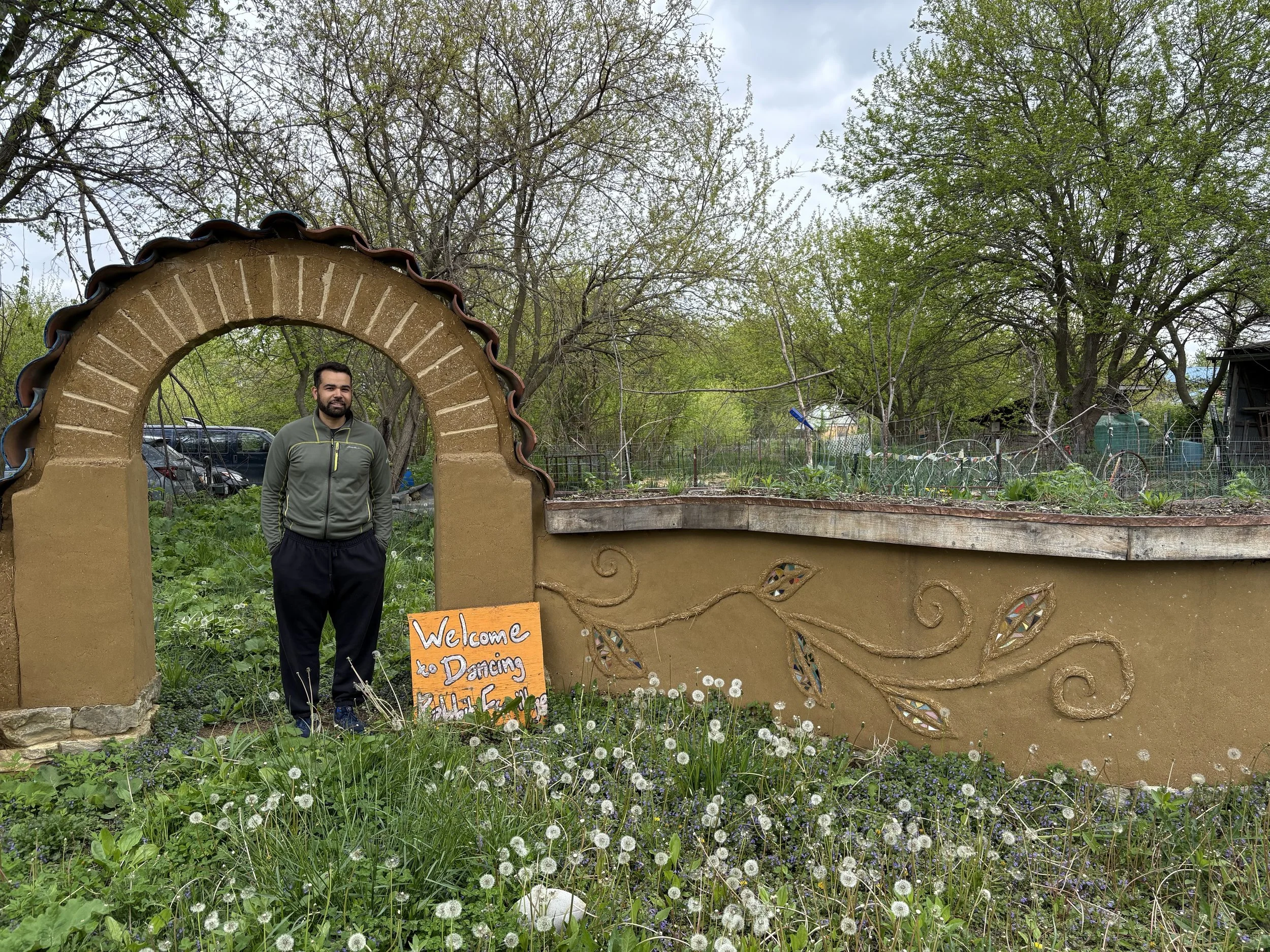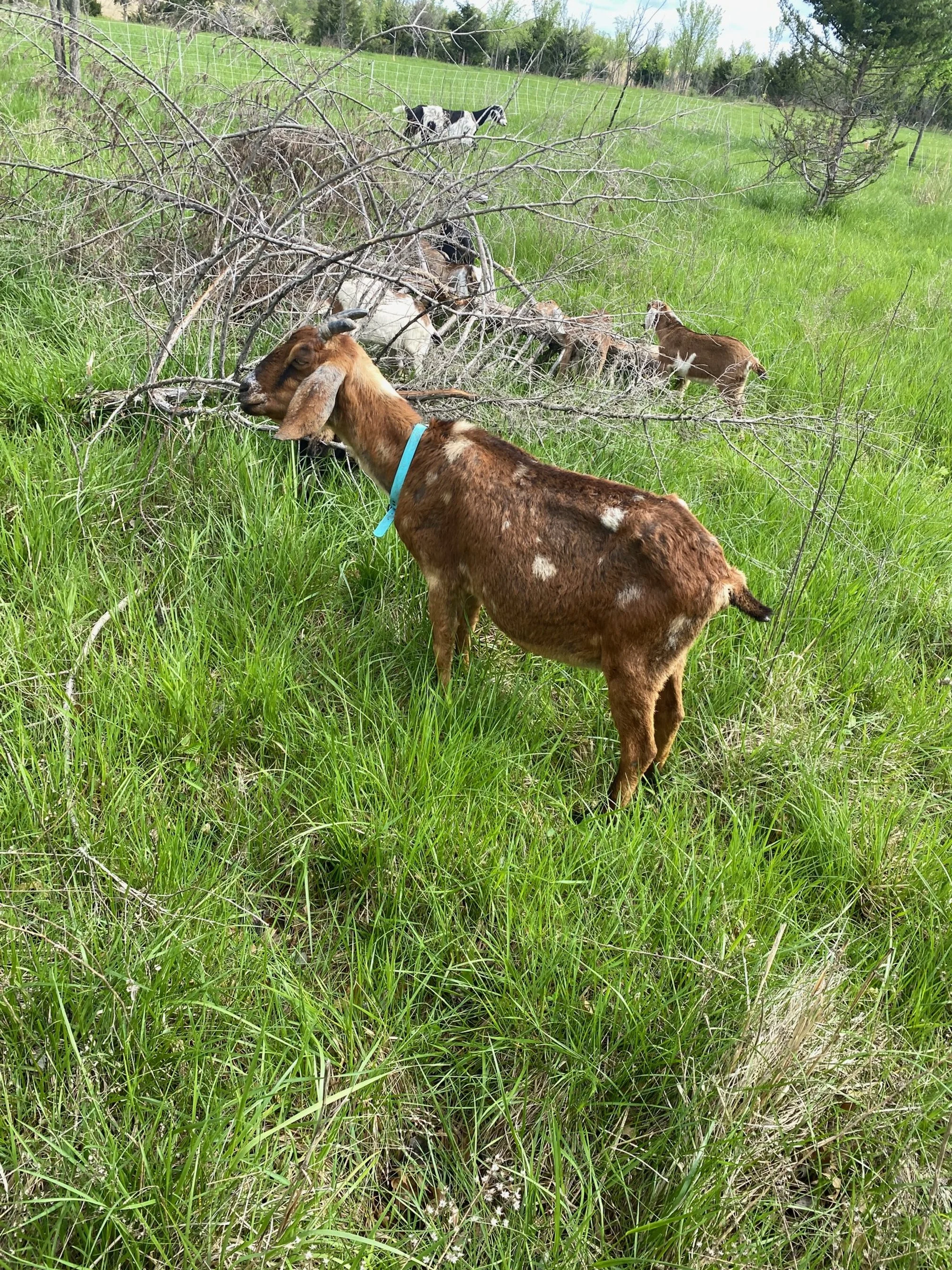Notes From The Field: Visiting Dancing Rabbit Ecovillage
In 2025, we have between 5–10 site visits planned as part of our Regenerative Places tour to visit agrihoods, ecovillages, and other interesting communities to gather design ideas and perspective for the Bennington Agrihood. The first stop on the tour was Agritopia in the American Southwest, but the second leg brought us a bit closer to home. The chosen locations were Dancing Rabbit Ecovillage in northeast Missouri and Middlebrook Farms, an agrihood near Des Moines, Iowa.
This post will focus on Dancing Rabbit, as it was more interesting and I spent more time there.
Dancing Rabbit is located in the rolling hills of northeast Missouri. It got its start in 1997 when the Dancing Rabbit Land Trust purchased 280 acres. The ecovillage is home to approximately 70 residents who live on about 10 acres of the land. The ecovillage would like to grow to 500-1000 residents eventually.
Arrival
We arrived at the ecovillage around 5 p.m. and parked in a small gravel lot near the property’s entrance. It was a short walk to the Milkweed Mercantile, the on-site bed and breakfast.
Before entering, we were greeted by the innkeeper, Jack, who showed us to our room. The Milkweed Mercantile itself is a beautiful cob building constructed by residents. It features a large commercial kitchen, a dining area, two shower rooms, and two bathrooms complete with composting, vault-style toilets. The B&B has two floors and a total of five guest rooms (I think).
Image of Milkweed Mercantile bed and breakfast. Photo from Tripadvisor.com because I forgot to take my own pic!
Within five minutes of setting down our things, we were in conversation with a researcher from Finland who was interviewing residents to learn more about life in the ecovillage. We were told that two research teams were present that weekend: the Finnish team, collecting data for a study on utopian communities, and another team made up of a Pepperdine University researcher collaborating with a D.C.-based nonprofit, there to study the community’s exclusive use of composting toilets.
After speaking with the Finnish researcher, we received a brief tour of the ecovillage, including the common house and its amenities, and an introduction to the norms we’d be expected to follow as guests. We were reminded to respect residents’ privacy and property—in other words, don’t treat residents like zoo animals or retail employees.
Evening Activities
Next came dinner, which we ate outdoors in a courtyard bordered by an outdoor kitchen/shop area, a shared housing unit, the common house, and the Milkweed Mercantile. We were joined by about 15 residents and visitors who sat at an array of picnic tables. There were many different cuisines being enjoyed at this community meal. We learned that residents use a system called kitchen co-ops, where a handful of residents or households collaborate on shared meals. People join kitchen co-ops for various reasons: to access certain kitchen equipment, align with dietary preferences, buy in bulk, or simply reduce the amount of time each member spends preparing food.
Over dinner, we got to know the residents and visitors—how long they’d been at the ecovillage, what they thought of the community, their roles within it, and more. Across from me sat a resident who ran the on-site forest school for children. To my right was a poop researcher from D.C., and diagonal from me was the community’s newest resident, a woman from Omaha who shared her ideas for building a home at the ecovillage.
Following dinner, there was essentially a focus group on composting toilets. It took place in the common house in a spacious, living-room-style area. A robust conversation lasted for 1.5 to 2 hours. The night ended with a bonfire in the ultimate frisbee field—which I didn’t attend but was invited to.
The Next Morning
At 7:30 the next morning (as happens every morning), the entire ecovillage was invited to the Milkweed Mercantile for coffee. Breakfast was served at 8 a.m. in the same room. Again, people from different kitchen co-ops with different cuisines sat together to converse and eat. We learned more about the lives of residents and their journeys to Dancing Rabbit. Among them was someone in their late twenties or early thirties who had retired from a hedge fund, and a retiree of traditional age who had spent her career teaching meditation in therapeutic settings.
The community dining room at Milkweed Mercantile
When I reserved the room at the B&B, I selected an option called “Meet the Goats!”—scheduled for after breakfast. Jack, our helpful innkeeper, led us out to the fields where goats were rotationally grazing inside a movable fence.
After petting some baby goats, I explored the residential portion of the ecovillage for the first time. I was struck by its simplicity. Each home was imagined and constructed by its owner, and each was uniquely interesting. I saw one hobbit home, a couple of roundhouses, several homes with names, and a few with living roofs. There was only a gravel walking path between homes—no driveways, garages, or any of the car-related infrastructure we’re used to seeing.
Goats in the rotational grazing system at Dancing Rabbit Ecovillage
On my walk, I followed a clearing through the prairie grass that led out of the residential area to a swimming pond. Near the dock were two non-motorized boats and some life jackets, free for anyone in the community to use.
My stay at Dancing Rabbit lasted less than 24 hours, but it felt like I’d been there a week. It was beautiful to see the real deal—the values of ecology in action.
Notable Features & Takeaways from Dancing Rabbit Ecovillage
Community Meals
Many residents regularly eat together, creating a sense of connection even when preparing different cuisines. Before dinner, someone called out an open invitation for anyone dining that evening to gather at the community picnic tables—an informal but effective way to bring people together.
Ecological Covenants
Dancing Rabbit doesn’t rely on loose suggestions for sustainability—they have formal ecological covenants. These are regularly referenced in decision-making and community discussions, anchoring values in shared agreements rather than individual preferences.
Kitchen Cooperatives
Residents form kitchen co-ops—small groups that pool resources, share equipment, and coordinate meals. These co-ops can range from a few people to a dozen and help reduce food costs while supporting specific dietary lifestyles.
Legal Structure
The ecovillage operates through multiple entities, including a land trust that owns the property, a nonprofit, and other supporting organizations. Each plays a specific role in governance and community development.
Car Share Program
Residents can opt into a car-sharing system that averages around $50 per month, enabling many to live car-free. As a result, Dancing Rabbit residents own 92% fewer vehicles per capita than the national average.
Living Laboratory
The village functions as a research site. During my visit, two teams were actively studying life at DR—one from Finland focused on utopian communities, and another from Pepperdine University and a DC nonprofit examining composting toilet systems.
Friendly Residents
The community was exceptionally welcoming and conversational. People were eager to engage, share their stories, and learn about others.
Water Runoff Management
No place gets everything right and one area for improvement at DR was related to water runoff. While eating outside, we noticed mud pooling under picnic tables in a shared courtyard. This highlights the tension between pursuing ecological goals and human aesthetic goals.
High Trust Culture
This is a place where doors aren’t locked. In fact, we weren’t even offered a key to our room at the bed and breakfast. The culture of trust is strong and intentional.
Outdoor Sauna
Tucked near the pond is a charming, mobile sauna—essentially a tiny house on wheels—available for communal use.
Kids & Education
Children were visible, active, and appeared well-socialized. I met the forest preschool educator and learned about previous homeschooling co-ops that were organized within the community.
Rebranding the “Agrihood”
A conversation with a Pepperdine researcher sparked thoughts about alternatives to the term agrihood. Phrases like “farm-to-table community,” “regenerative place,” or even “hamlet” might better capture the essence and appeal of this kind of living.
Meet the Goats!
Our stay included a delightful "Meet the Goats!" experience. Led by our innkeeper Jack, we got hands-on with the goats while learning about their rotational grazing practices—a practical and adorable entry point to understanding DR’s land stewardship.
Open Questions
1. How can communities host visitors while balancing privacy and avoiding the feeling of being “on display”? Originally when thinking about the Bennington Agrihood, I didn’t see any downsides of visitors being a constant presence but after visiting Dancing Rabbit, I can imagine how this can detract from a sense of safety and freedom to roam for children. How to thread the needle?
2. How can models like this and ours proliferate?
Obviously, if you want to maximize impact you’ll need to think beyond the immediate development opportunity to make a larger impact in the world. Dancing Rabbit has done this by making good use of work exchange programs. They have a research program which gives researchers from across the globe access to residents and data sets. They have natural building workshops as well and a b&b for visitors like myself to stay. Which of these things are right for the Bennington Agrihood and are there any other ideas we can leverage to proliferate our model?




